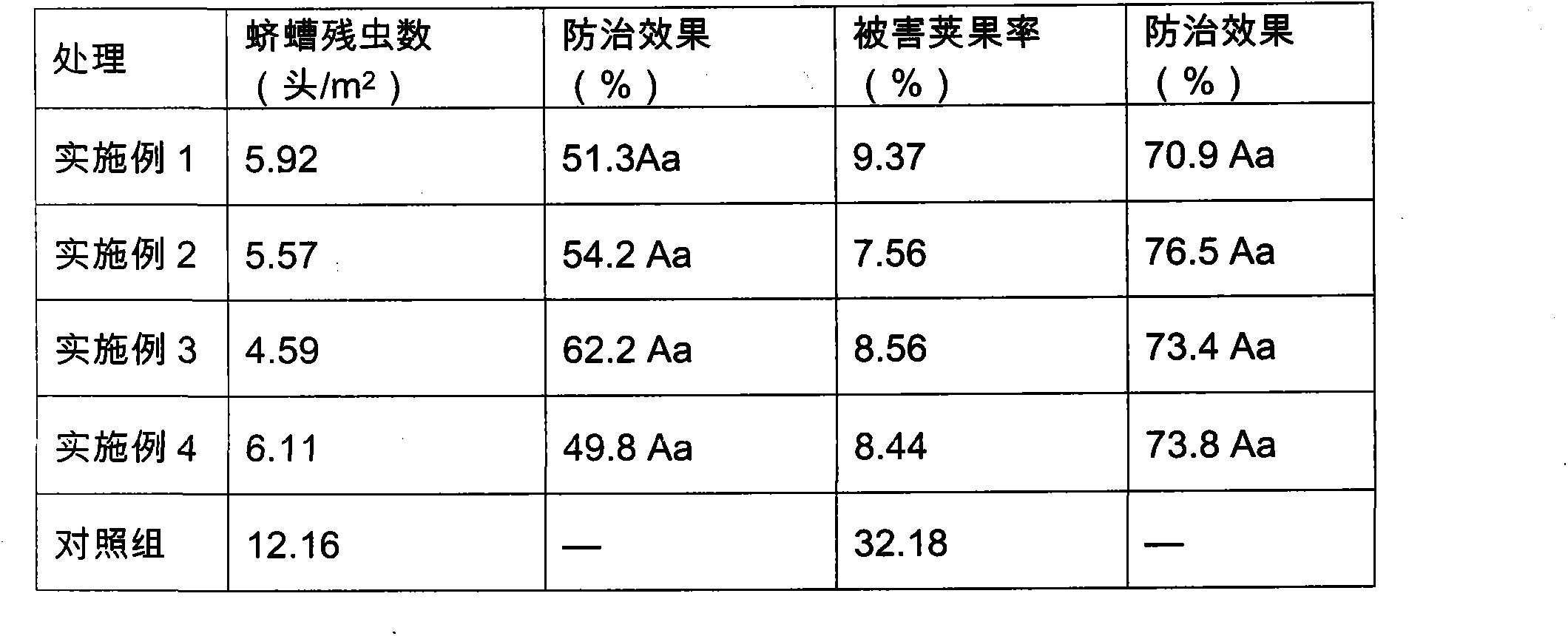Traditional Chinese medicine pesticide for peanuts
An insecticide and traditional Chinese medicine technology, applied in the field of traditional Chinese medicine insecticides for peanuts, can solve the problems of easy bioaccumulation, large pollution, and high toxicity of insecticides, and achieve long-lasting effects
- Summary
- Abstract
- Description
- Claims
- Application Information
AI Technical Summary
Problems solved by technology
Method used
Image
Examples
Embodiment 1
[0015] A traditional Chinese medicine insecticide for peanuts, its components are in parts by weight, as follows: 10 parts of pagoda tree roots, 20 parts of mulberry leaves, 10 parts of saponins, 10 parts of phoenix leaves, 20 parts of chrysanthemums, 10 parts of Chinese fragrant trees, 10 parts of lotus 15 parts of leaves, 10 parts of fennel, 10 parts of mint, 5 parts of Aconiti, 15 parts of Sophora flavescens, and 15 parts of hundred parts.
[0016] A kind of peanut traditional Chinese medicine insecticide as above, its preparation method is:
[0017] Weigh each component according to the above parts by weight, soak in water at 25-30°C for 2 hours, boil until boiling and continue heating for 20-30 minutes, then anneal and cool down, filter the medicinal residues, concentrate and preservative the medicinal solution, pour Pack and seal the finished product.
Embodiment 2
[0019] A traditional Chinese medicine insecticide for peanuts, its components are in parts by weight, as follows: 20 parts of pagoda tree roots, 25 parts of mulberry leaves, 15 parts of saponins, 18 parts of phoenix leaves, 25 parts of chrysanthemums, 15 parts of Chinese fragrant trees, 15 parts of lotus 20 parts of leaves, 20 parts of fennel, 15 parts of mint, 15 parts of Aconitum, 18 parts of Sophora flavescens, and 20 parts of hundred parts.
[0020] A kind of peanut traditional Chinese medicine insecticide as above, its preparation method is:
[0021] as example 1
Embodiment 3
[0023] A traditional Chinese medicine insecticide for peanuts, its components are in parts by weight, as follows: 15 parts of pagoda tree roots, 22 parts of mulberry leaves, 12 parts of saponins, 15 parts of phoenix leaves, 22 parts of chrysanthemums, 12 parts of Chinese fragrant trees, 12 parts of lotus 17 parts of leaves, 15 parts of fennel, 12 parts of mint, 10 parts of Aconitum, 16 parts of Sophora flavescens, and 17 parts of herb.
[0024] A kind of peanut traditional Chinese medicine insecticide as above, its preparation method is:
[0025] as example 1
PUM
 Login to View More
Login to View More Abstract
Description
Claims
Application Information
 Login to View More
Login to View More - R&D
- Intellectual Property
- Life Sciences
- Materials
- Tech Scout
- Unparalleled Data Quality
- Higher Quality Content
- 60% Fewer Hallucinations
Browse by: Latest US Patents, China's latest patents, Technical Efficacy Thesaurus, Application Domain, Technology Topic, Popular Technical Reports.
© 2025 PatSnap. All rights reserved.Legal|Privacy policy|Modern Slavery Act Transparency Statement|Sitemap|About US| Contact US: help@patsnap.com


